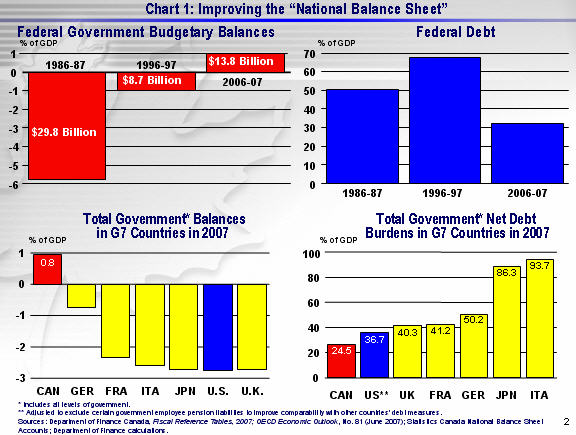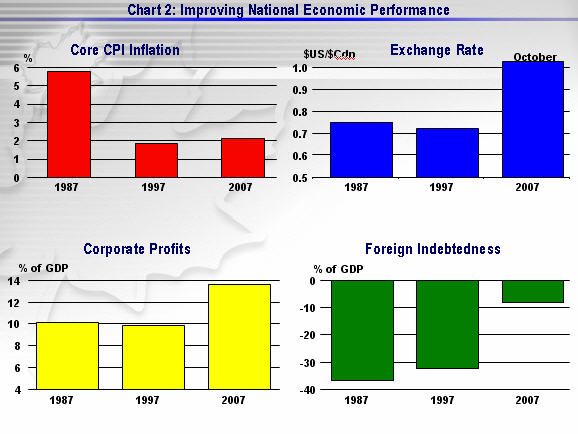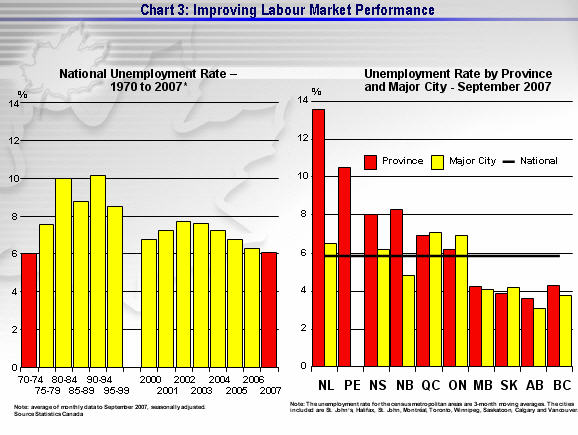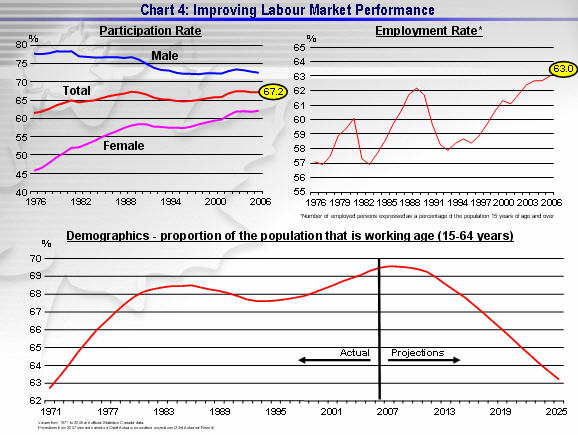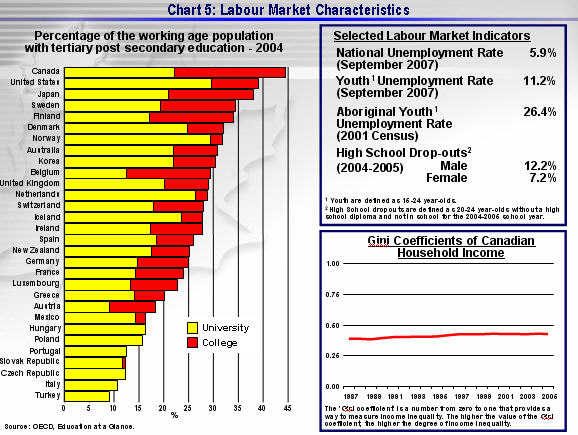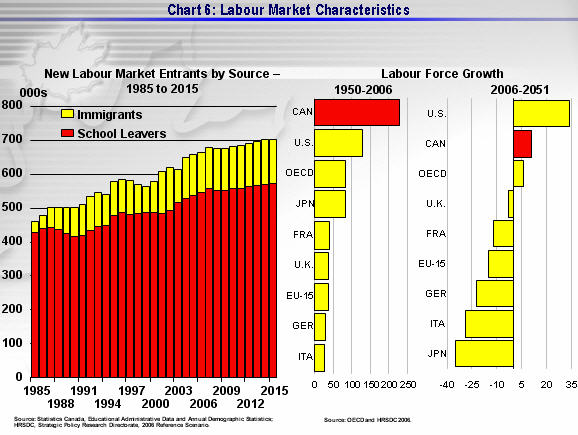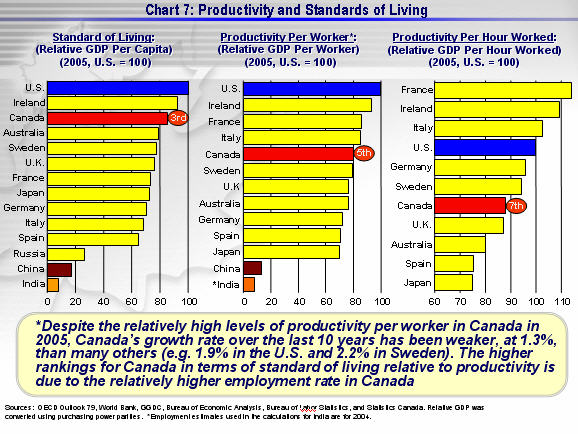Common menu bar links
"Are Canadians Too Modest?"
Remarks by the Clerk of the Privy Council
And Secretary to the Cabinet
November 1 , 2007
Centre for Canadian Studies
Mount Allison University
Introduction
It is a distinct honour to have been asked to present this year’s Davidson Lecture in Canadian Studies at Mount Allison University, and I thank you for the opportunity. Not only is it an occasion to return to a campus I fondly remember, and a special university which has provided me and countless others with the unique experience of a liberal arts undergraduate education, but this lecture allows me to talk about two subjects near and dear to me, public policy and public service.
As a public servant for over 31 years, I have enjoyed a career in the Public Service of Canada that has allowed me to engage in public policy issues affecting Canada, both across our country and around the globe. This has presented a non-partisan vantage point on the sweeping public policy challenges we have faced as a country in the final decades of the 20th century and the opportunities before us in the early stages of this century.
My purpose today is to tackle the all-too-common notion that nothing significant ever changes in Canadian public policy, that economically we are continually falling behind other nations, and that the public service is “the permanent custodian of perpetual problems” rather than a source of new ideas and perspectives and change.
While I will argue that the last 20 years have been a period of remarkable transformation in Canada, these notions have long roots – they were there in the doubts about a young country’s military capacity before Vimy Ridge, in questions about our ability to build an industrial base to support our second world war effort; fears that Canadian business could never compete without high tariff walls against American companies before the Canada-U.S. Free Trade Agreement (FTA); and, the view we cannot compete today with the emerging Asian giants. These myths belie a deeper question: are we as Canadians too modest, too unwilling to fully assert our place in the world, perhaps too complacent about today to strive for more tomorrow?
Looking Back: Some Context
The best way to understand the progress we’ve made in recent decades is to put it in the context of where Canada was 20 years ago, 10 years ago, and today.
Approaching 1987, Canada faced deeply rooted challenges that were hobbling our economic performance. We were still a relatively closed economy, with high tariff walls at a time when globalization and trade liberalization were becoming the driving forces of change. The federal government faced large and increasing fiscal deficits, and a rapidly growing mountain of debt. Governments accounted for more than half of the economy, not the private sector, and we were inward facing when our prospects faced outwards.
Within a few years, however, we had negotiated the Free Trade Agreement with the U.S., and Canadians understood the U.S. market was not a threat but an opportunity. Crown corporations were privatized, and the heavy postwar regulatory burden began to be lifted. Canada implemented the GST. But, deficit and debt still bedeviled us.
Ten years later, Canada was beginning to emerge from its fiscal crisis, just two years after the Wall Street Journal editorial had called Canada “bankrupt” and our dollar the “northern peso”. By 1997, our annual $42-billion deficit had become a surplus, debt paydown had begun and large tax relief would arrive by the year 2000. But, the economy was still sluggish, the dollar low, and foreign indebtedness high.
And so here we are in 2007. We’ve had 15 uninterrupted years of solid, low-inflation economic growth. The national unemployment rate is at its lowest level in almost 35 years. The federal budget has been balanced for 11 consecutive years, and our national debt is the lowest in the G-7 (Chart 1). We’ve re-invested tens of billions into the health care system, and billions into our university research capacity. The dollar is at parity, corporate profits are at record highs and our net foreign-indebtedness is rapidly disappearing (Chart 2). And we’ve made this progress while maintaining income equality and social cohesion in Canada.
Nirvana, hardly; real progress, unambiguously.
The Challenges of Today
This brings us to the policy challenges we face today. They are different than a generation ago, in part because of the progress we’ve made and in part because of changes in the world we inhabit. Yet, with progress on a number of the major domestic issues of the last several decades can come one of the perils of prosperity, namely complacency.
We live in an era of profound globalization, with all its opportunities and its risks. The era of the peace dividend has given way to a more volatile and uncertain world, with the advent of global terrorism, international crime cartels and aggressive nationalism. The marketplace has become truly global, where new competitors are as likely to originate in Shanghai or Hanoi as in New England or Michigan. And the environment, especially climate change, has become a focus of public concern in many countries, both developed and developing.
Challenges, yes; same old challenges, hardly.
Underlying all these challenges is the importance of leadership. That means recognizing how the world is changing, how we might best respond to events, and how we can help create the conditions for Canadian success. Leadership is not something that others do, it requires all of us, whether it be those in the business community, or in the public sector, or in the academic community, to understand the challenges facing us and to help move the process of change forward.
In this context, and befitting the university location for this lecture, I want to discuss today two key elements of the modern wealth of nations, our intellectual capital and our human capital.
The Opportunities of Tomorrow
In focussing on the dual importance of intellectual capital and human capital for Canada’s prospects, I am mindful of the admonition of Albert Einstein that “Everything should be made as simple as possible, but no simpler”. Simply put, then, our future standard of living will be largely shaped by improvements in our productivity performance, and this in turn will be strongly influenced by the quality of our work force and the quality of our ideas.
Innovation, the ability to envisage and create new products and services, or to produce today’s products in different ways, lies at the heart of modern competitiveness. Joseph Schumpeter, labelled the “prophet of innovation” in a recent Pulitzer-prize winning book, once remarked: “Without innovation, no entrepreneurs; without entrepreneurial achievement, no capitalist returns and no capitalist propulsion”. More prosaically, a fairly well known inventor named Henry Ford once captured the essence of the disruptiveness of innovation by commenting that: “If I had asked my customers what they wanted, I would have built a faster horse”.
Let me start with a snapshot of the Canadian labour market. After decades of excess supply of labour, and public policies designed to respond to this problem, we have recently moved into a period of excess demand for available labour, a period which may prove quite persistent. In part driven by demographics, in part by the changing nature of the Canadian economy, this may turn out to be a seminal turning point, with consequences for all of us --- educators, workers, students, business persons and public policy makers.
First, some headline statistics. The national unemployment rate of less than six percent is at its lowest level since the early 1970s. Moreover, in urban areas of the Atlantic such as Moncton, the unemployment rate is well below the national unemployment rates (Chart 3). This is unprecedented.
Next, some background trends leading to today’s statistics. Those 15 uninterrupted years of solid economic growth, combined with ongoing restructuring of the Canadian economy and strong resource prices, have created a lot of new jobs, increasingly knowledge-intensive jobs, in both new and old firms and in both traditional and new industries.
We have filled those jobs with a well educated workforce, one that is increasingly female, one that has been supplemented with skilled immigrants, and one that is ageing. We are at a demographic high in the proportion of the population that is of working age ( Chart 4), but this will soon change as the demographics of ageing hit home after 2010. The overall participation rate is at an all-time high, driven exclusively by higher rates of female labour force participation, but we are facing declining male participation rates (Chart 4). The employment rate is also at a postwar high, spurred by fewer disincentives to work, but the scope for significant further increases is limited given current labour market structures.
Thus our collective challenge going forward is finding enough workers with the right skills, education, training and flexibility to fill the jobs of tomorrow.
Canada today has the highest percentage of the working age population with post secondary education of any OECD country (Chart 5). But, it is still less than 50 per cent of the population, and other countries are closing the gap. Moreover, a number of other countries, including the US, have higher proportions of their populations with university degrees, and more students proportionally in math, science and engineering. We do well with both overall high school graduation rates and comparative OECD proficiency scores, but today over 12 percent of males do not graduate high school and the unemployment rate for aboriginal youth is distressingly high (Chart 5). More progress on these issues must be made to improve the Canadian labour market of tomorrow.
This demographic reality for Canada of slower population growth than we have ever experienced in the postwar period will inevitably impact on future labour force growth (Chart 6). The extent to which it also impacts on our economic growth prospects will depend on how well we improve labour productivity and encourage new entrants into the work force (Chart 7). Indeed, the fact is 40 percent of the gain in our standard of living over the last decade has come from the rise in the labour force employment rate, not productivity growth, and this cannot be counted on to continue.
In the future, therefore, it will depend importantly on how well we develop a world class management culture and cadre, and encourage more entrepreneurship, research and development and competition in Canada. Innovation --- the continuing the quest to develop new products, new business processes, new global marketing --- will be key to Canada’s future competitiveness and improving our productivity.
Here Canada’s story is mixed. We are now the fourth in the OECD in public sector R&D expenditure as a share of the economy, and first in the G7. But we need to be better in commercializing it, and be better at gearing public research towards excellence. On the private sector side, business spending on R&D is dismal, a distant 15th among OECD countries (Chart 8). We have to do better in research and development, and the commercialization of our research, to be competitive against the U.S., China and India in the decades to come.
Perhaps most importantly, in all that we do, whether it is research or product or process innovation, excellence has to be the Canadian norm, not the exception.
This same context which is fundamentally changing Canadian labour market dynamics is also driving the need for renewal of the Public Service of Canada. Canada’s modern public service was largely built up during and immediately after the Second World War, and the first large-scale renewal occurred 30 later, in the mid 1970’s. We are now, 30 years later, in the second renewal phase, with a rapidly ageing public service, particularly in the more senior ranks.
This time public service renewal is a clear and present challenge. As set out above, we are facing the most competitive national labour market in over 35 years. There are many more options in the private sector for today’s graduates than there were when I finished university. That’s good news for the students of today, but a real risk for the public service of tomorrow. We need to rebuild the “public service brand”, market the unique careers public service offers, and stress our core values of nonpartisanship, professionalism, leadership and excellence.
In June, I had the honour and pleasure to participate at the 2007 Public Service Awards of Excellence. This year’s award winners included the team of public servants who evacuated 14,000 Canadians from Lebanon in extraordinary circumstances, scientists who have strengthened our BSE detection systems to world class levels, and a team from Health Canada and Environment Canada that has mapped 23,000 commercial chemicals and categorized their potential health risk. All have made inspiring contributions to their country at home and abroad. That’s what public service at its best is all about, making a difference.
As important as public service renewal is for those of us in the public sector, I would argue it is equally important for all Canadians. As the 2007 Report of the Prime Minister’s Advisory Committee on the Public Service, a group of nine outstanding Canadians, bluntly stated: “… a well-functioning and values-based public service is critical to the success of every country in today’s complex and interconnected world. As a national institution a high quality, merit-based Public Service is part of Canada’s comparative advantage and a key to competitiveness in the global economy. It also helps provide the foundation for sound democratic government.” While Canadians need to understand the importance of renewal for the public service to remain relevant, useful and respected, they also need to recognize the important role the public service has played in the ongoing success that is Canada.
Conclusion
Let me conclude a speech that is almost as long as it may seem by returning to the question posed at the outset: are we as Canadians too modest? Over the last 20 years, I would argue we have certainly shown we can adapt well to a rapidly changing world, and will need to continue to do so to meet the challenges of tomorrow. We are blessed with bountiful natural resources, but it is our people, and their values, aspirations and ambitions, that will enrich us further. And, while we can and should celebrate our successes, we can never be or become complacent.
Canada is modest, yes, by nature. But Canada also has much to be immodest about, by dint of our achievements as a mid-sized country staking out its own path and brand in the complex world of today.
I have the honour every day to look out from my office across to the Parliament Buildings with the Peace Tower, topped by a billowing Maple Leaf flag, soaring above them. As the New York Times recently noted: “the nexus of Canada’s federal government--- just steps from downtown, across an unfenced emerald lawn- --is thrillingly accessible.” It is, and that is typically Canadian.
We are a country that has anchored its constitution to the principles of peace, order and good government. We want peace, and Canadians have been willing to fight and die to preserve it. We value order, and Canadians have built unique institutions and systems to nurture and protect it. We embrace the importance of good government, and young Canadians over generations have been willing to serve their country through public service to build it. I hope many of you will consider following in their footsteps.
Thank you

